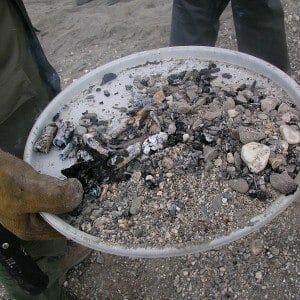
 If you’re an avid outdoorsman who enjoys camping, you may have heard of a “leave no trace” campfire. Campfires are an essential part of camping. They provide warmth, light, heat for cooking, and even a social-friendly environment. So, what is a leave no trace campfire?
If you’re an avid outdoorsman who enjoys camping, you may have heard of a “leave no trace” campfire. Campfires are an essential part of camping. They provide warmth, light, heat for cooking, and even a social-friendly environment. So, what is a leave no trace campfire?
A leave no trace campfire isn’t a specific type of campfire. Rather, it refers to the way in which a campfire is created and managed. It follows the seven principles outlined by the nonprofit organization Leave No Trace Center for Outdoor Ethics, which includes the following:
- Plan ahead and prepare
- Travel and camp on durable surfaces
- Dispose of waste properly
- Leave what you find
- Minimize campfire impacts
- Respect wildlife
- Be considerate of other visitors
The fundamental principle behind a leave no trace campfire is to, well, leave no trace. Campfires typically leave behind some evidence of a fire, such as ashes and leftover/unused firewood. If you want to create a leave no trace campfire, though, you should strive to eliminate evidence such as this. There are several ways to create a “minimum impact” fire, each of which has its own advantages and disadvantages.
A mound fire, for instance, is a type of campfire that’s built from a mount of mineral soil (soil containing mostly minerals instead of organic matter) over a fire blanket. Mound fires should be at least 6″ tall and 12-24″ long. After creating the mound of soil, you should form a depression in the center, which is where the actual fire will burn. Mineral soil can be collected from root bulbs.
An alternative to a mound fire is a fire pan. Although it looks like an ordinary frying pan, fire pans are used specifically for building fires. They are used to minimize impact of campfires on the ground, vegetation and environment. A fire pan allows for quick and easy burning, reducing firewood and paper waste to ash, which is contained atop the pan. To use a fire pan, you should place several rocks on the desired area so the heat doesn’t scorch the ground underneath. Next, place the firewood inside the pan and ignite. Fire pans are often preferred when camping because they can be picked up and transported. If you’re in a bind and don’t have access to an actual fire pan, however, you can always use a traditional cooking pan.
If you have any questions regarding how an S&S Fire Pit can enhance your outdoor living space; We can help. https://ssfirepits.com/contact/


